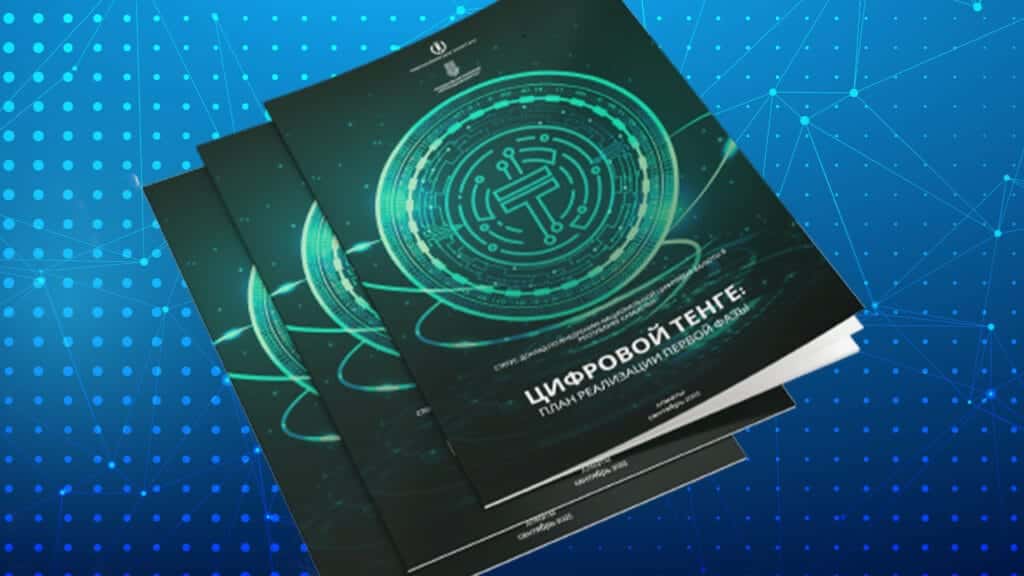National Bank presents Digital Tenge in Kazakhstan

The National Bank of Kazakhstan has announced the launch of the digital tenge (DT). Binur Zhalenov, head of the Kazakhstan Interbank Settlement Center (KISC) told Kursiv how the digital currency is going to work.
«When we were working on the DT we tried to forget about certain technologies and just think about what basic criteria and principles the new payment facility should meet in the context of the digital economy. We believe that payments must be instant. Of course, reliability, accessibility and soundness of funds belonging to regular people and businesses are also key requirements. Digital payments must be available for any citizen of Kazakhstan around the clock seven days a week everywhere. These payments must stimulate financial inclusion and promote innovations, the system of international transfers and cross-border payments,» he said at the ceremony of the DT presentation.
As Zhalenov noted, the DT is going to be the third form of the national currency in addition to cash and non-cash payments and will combine both options. For example, the DT will be available offline. A single chain of offline transactions will include up to 15 transactions. The DT will also be available for online payments with the help of banking apps. Moreover, this currency can be programmed for certain public or private services.
«In fact, this is smart money that can be used in smart contracts, innovative financial services, safe settlement with digital assets, etc. We aren’t intending to compete for end-users with market participants. This is why the currency will be primarily available through banking apps and the infrastructure of financial market participants. The DT is secured by the National Bank on behalf of state liabilities, which guarantees the soundness of people’s and businesses’ money,» Zhalenov underlined.
The DT is available for every Kazakhstani citizen throughout the world. No other apps or devices are needed. The currency can be withdrawn from any ATM. At the initial stage, the integration is supported by the regulator and four commercial banks: Eurasian Bank, Bank CenterCredit, Halyk Bank and Altyn Bank, as well as international payment systems Visa and Mastercard and Onay, an operator of the payment system for public transportation.
«We have built the DT in a certain way, so it can be integrated with systems such as social wallets, family digital cards and different public services. For instance, we have a mechanism of digital vouchers with the Almaty city’s administration, Onay and Kazpost. The idea of a smart contract is the combination of hundreds of business processes including identification and data on settlement which makes the system absolutely transparent,» Zhalenov said.
For instance, if a student has a transport card he will be able to confirm a visit to a canteen with the help of the DT and this process will be visible to his school, providers of services and parents. Moreover, the DT can be used in the real economy as well, for example for signing and paying for cargo delivery.
«We think that this scheme will be useful not only for subsidies related to meals in schools but also for many other services. We hope that this system will be scaled in the near future,» the official emphasized.
Moreover, the DT can be used for transactions with cryptocurrencies and other digital assets because the DT platform has been built on blockchain technology. By doing this, the National Bank of Kazakhstan has become the third central bank in the world that successfully tested SWIFT for cross-border payments and is now planning to create international settlements with 25 other central banks.
According to Berik Sholpankulov, deputy head of the National Bank, the main task for commercial banks is to use the DT in their innovative services like smart contracts and cross-border payments that can reduce the number of mediators.
«We have made the DT to suit the existing infrastructure to make customers feel good. If some data is lost, it will be easier to restore. This will happen automatically once all proving information is available,» he said.
Sholpankulov also noted that at the first stage, a special banking card will be required for those who want to use the DT because the National Bank wants to limit the number of participants in this system. At the next stage, probably next year, an account with the DT will be opened with the help of existing banking cards. It will be possible to convert digital money into E-money or fiat currencies and vice versa.
The National Bank started to think about the creation of a digital currency and tested the basic technological principles needed for its launch in 2021. Last year, the regulator implemented the Digital Tenge Pilot Project in conjunction with financial market participants and tested whether it was possible to conduct the most popular financial transactions with the help of digital money. In December 2022, the regulator published its White Paper 2022 where it presented the results of a feasibility study of the introduction of the digital tenge.
According to Zhaslan Madiyev, head of Binance in Kazakhstan (the biggest crypto exchange in the world), the DT initiative is the most advanced in the Central Bank Digital Currency (CBDC) market. Starting this year, the DT can be found in retail turnover, while full-scale development of the platform with market participants, offline payments and digitalized public payments is expected next year. In 2025, all other market participants will join the project and cross-border payments will become available.

